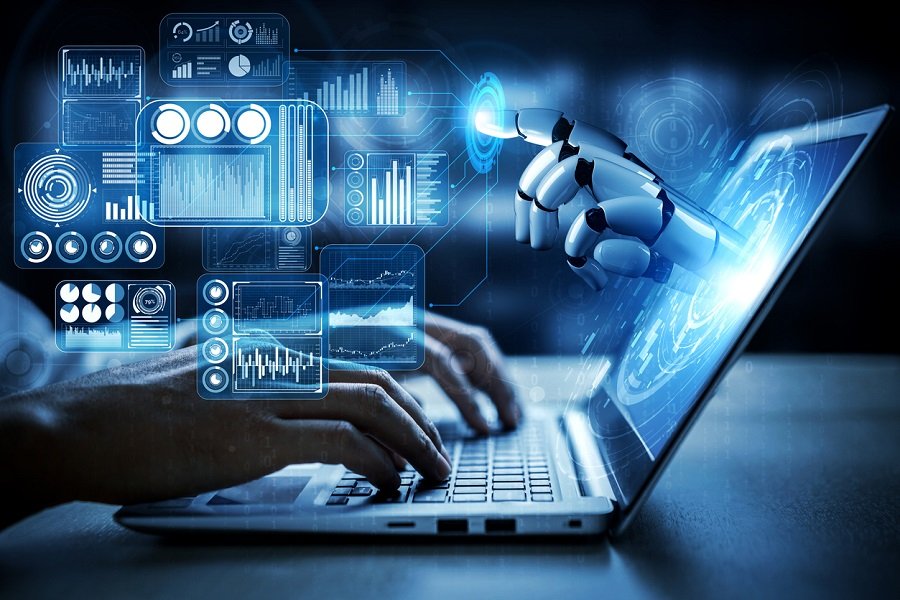Revolutionizing Efficiency: The Unprecedented Role of AI in Business Process Automation
In the dynamic landscape of modern business, where agility and efficiency reign supreme, Artificial Intelligence (AI) has emerged as a transformative force, reshaping the way organizations operate. One of its most significant contributions is in the realm of Business Process Automation (BPA), a paradigm shift that empowers enterprises to streamline operations, enhance productivity, and unlock new realms of innovation.
The Essence of Business Process Automation:
Business Process Automation involves the use of technology to automate repetitive, rule-based tasks and processes within an organization. These could range from data entry and document verification to complex decision-making processes. Traditionally, these tasks were performed by human workers, consuming time and resources that could be better allocated to more strategic activities.

AI as the Catalyst for Transformation:
At the heart of this transformative journey is Artificial Intelligence, which acts as the catalyst for automating tasks that previously required human intelligence. Unlike traditional automation that follows pre-programmed rules, AI-driven automation systems have the ability to adapt, learn, and improve over time. This adaptability is a game-changer, allowing organizations to respond dynamically to changing conditions and evolving business needs.
Enhancing Decision-Making with AI:
One of the key strengths of AI in BPA lies in its capacity to handle complex decision-making processes. Through machine learning algorithms, AI systems can analyze vast datasets, identify patterns, and make decisions based on learned insights. This not only accelerates decision-making but also reduces the margin of error, leading to more accurate and data-driven outcomes.
Consider, for example, the finance sector. AI algorithms can analyze market trends, assess risk factors, and make split-second decisions on trading, far surpassing the capabilities of traditional automated systems. This level of sophistication is extending to various industries, revolutionizing decision-making processes across the board.
Efficiency Gains and Cost Reduction:
AI-driven BPA brings about unprecedented efficiency gains, allowing organizations to achieve more with fewer resources. Mundane and repetitive tasks, which once occupied a significant portion of human work hours, can now be handled swiftly and accurately by AI systems. This not only frees up human workers to focus on more creative and strategic endeavors but also reduces operational costs in the long run.
In customer service, for instance, AI-powered chatbots can handle routine inquiries, provide information, and even facilitate simple transactions. This not only improves customer satisfaction by offering immediate responses but also allows human customer service representatives to focus on more complex and nuanced interactions.
The Evolution of Robotics Process Automation (RPA):
A subset of BPA, Robotics Process Automation (RPA), integrates AI and machine learning with robotic technology to automate tasks traditionally performed by humans. RPA mimics human actions in interacting with digital systems, enabling the execution of intricate processes across various applications.
In manufacturing, for instance, RPA is revolutionizing the production line. Robots equipped with AI capabilities can adapt to variations in product specifications, perform quality checks, and even predict maintenance needs, leading to a significant reduction in downtime and an increase in overall productivity.
Challenges and Considerations:
While the benefits of AI in BPA are undeniable, challenges and considerations exist on the path to seamless integration. Data security and privacy concerns are paramount, especially as organizations increasingly rely on AI to handle sensitive information. Ensuring compliance with regulations and implementing robust cybersecurity measures are imperative steps in addressing these concerns.
Additionally, the human element cannot be overlooked. As automation becomes more prevalent, organizations must prioritize reskilling and upskilling their workforce to thrive in a digitally transformed environment. The collaboration between humans and AI is not about replacement but about augmentation, with AI handling routine tasks while humans focus on higher-order thinking and creativity.
Future Horizons:
Looking ahead, the role of AI in BPA is poised to expand further. The marriage of AI with technologies like Natural Language Processing (NLP) and Predictive Analytics opens new frontiers for automation. Conversational AI, for example, allows systems to understand and respond to human language, revolutionizing customer interactions and internal communication processes.
The concept of “hyper-automation,” which integrates advanced technologies like AI, RPA, and process mining, promises end-to-end automation of business processes. This holistic approach not only automates individual tasks but optimizes entire workflows, ensuring a synchronized and efficient operation.
In conclusion, the role of AI in Business Process Automation is not just a technological advancement; it is a paradigm shift that redefines how organizations operate in the digital age. As businesses increasingly recognize the transformative potential of AI, the synergy between human intelligence and artificial ingenuity will shape a future where efficiency, innovation, and productivity reach unprecedented heights. Embracing this evolution is not just a choice; it’s a necessity for organizations aiming to thrive in the fast-paced and competitive landscape of the 21st century.